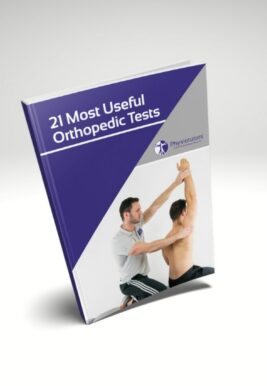Learn
Single Leg Stance Test | Gluteal Tendinopathy (GTPS)
Gluteal tendinopathy which falls under the nowadays used umbrella term greater trochanteric pain syndrome or GTPS is part of the differential diagnosis in patients with lateral hip pain.
Grimaldi et al. (2016) conducted a diagnostic accuracy study on different diagnostic tests that were contrasted to MRI findings indicative of gluteal tendinopathy. The Single leg stance test was the most specific test in the study with a sensitivity of 38% and a specificity of 100%. In a different study by Lequesne et al. (2008) the test had 100% sensitivity and 97,3% specificity when applied in symptomatic and asymptomatic people.
Grimaldi’s study setup mimics clinical situations better as we don’t see the unsymptomatic patient and judging from their findings, a positive test can practically establish that Gluteal tendinopathy is present though excluding the condition with a negative test is not possible, which is why we give it a strong clinical value in including the condition.
To conduct the test, have the patient standing next to a wall with the affected leg furthest from the wall. The patient touches the wall with one finger of the unaffected side at shoulder height for balance. Then the patient raises the foot of the unaffected leg by flexing the knee to 90° keeping the hip of the unaffected leg in neutral position. This position is maintained for up to 30 seconds.
A positive test is the reproduction of the patient’s lateral hip pain in the region of the greater trochanter of at least 2/10 on the NPRS within the 30-second period.
21 OF THE MOST USEFUL ORTHOPAEDIC TESTS IN CLINICAL PRACTICE

Other orthopedic tests that assess for gluteal tendinopathy are:
- Resisted External Derotation Test
- Greater Trochanter Palpation
- FADER / FADER-R / Modified Resisted External Derotation Test
- ADD / ADD-R/ Modified Ober’s Test
References
Like what you’re learning?
BUY THE FULL PHYSIOTUTORS ASSESSMENT BOOK
- 600+ Pages e-Book
- Interactive Content (Direct Video Demonstration, PubMed articles)
- Statistical Values for all Special Tests from the latest research
- Available in 🇬🇧 🇩🇪 🇫🇷 🇪🇸 🇮🇹 🇵🇹 🇹🇷
- And much more!








